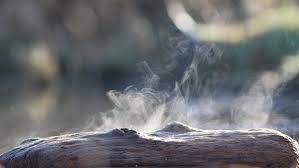
Flash Point--Does it Matter in Candle Making?
Share
Lately we have had more inquiries about the flashpoint of our scents. I have been making candles for almost 30 years and have never worried about flash point. But I know a lot of folks out there are concerned. Maybe it is because of the way I test that the people that use my oils don't need to worry about flashpoint. When I am bringing a new scent into the line up, I test by heating my soy wax between 180-190F, adding my scent, stirring for 2 minutes and pouring immediately. I test hundreds and hundreds of scents using this process. By the time I introduce a scent to the world it has gone through this process numerous times. So, since this is the way I test, it is not surprising that I don't need to worry about flashpoint with Candle Cocoon scents.
But I still don't understand why knowing the flashpoint is something that causes concern in candle making. I don't want to sound like an old curmudgeon that doesn't want to live in the present and lives for the "good ol' days". So I am trying to investigate the need for knowing the flashpoint. I have spoken with a few chemists and they are also at a loss as to why there would be a concern about flashpoint when making candles. Unlike the commonly held thought that the flashpoint of a scent is the point at which it magically disappears, it is actually the point at which a liquid will form a vapor and ignite when there is an ignition source near. The problem that I have with using flashpoint to determine when to add a scent is that once the fragrance mixes with the wax it takes on more of the higher FP of the wax. And since the scent is usually more dense than the wax it goes to the bottom of the pot at first. So the scent will sit at the bottom of the pot and get mixed into the wax. There is very little time for the scent to reach the flash point before it is mixed/bonded with the wax. I would worry more about high solvent scents "flashing off" as solvents are used to "throw" scent. So if there is a lot of solvent it may work to throw the scent more while heating. But again, Candle Cocoon scents have no extra solvents. Solvents are a cheap way to make scent go farther - but they can also cause headaches and bronchial issues so we don't go that route.
Candle Cocoon does not use flashpoint in candle making because
- If a scent doesn't pass our initial testing procedure we don't use it. (See above)
- We have not found a scientific reason to use flashpoint in candle making.
Think about it like this. Let's say you add a 150F flashpoint scent to a 350F flashpoint wax. You are only using about 6% of the scent and 94% of the wax. The overall flash point of the mixture will be much closer to the 350F flash point because so little of the scent is in the mixture. Unless a scent is highly unstable it just won't leave the mixture super fast.
So, does flashpoint matter in candle making? Overall, I don't know. It doesn't seem to matter for our scents. Never the less, maybe there is something else going on that I just don't understand. And since I don't want to be an old curmudgeon I will be adding the flash point information for each of the Candle Cocoon scents on the website on a "Flashpoint" page in the library and also on the individual scent page. Hopefully this helps some folks!
Happy candle making!!!
Lyschel
UPDATE: While I still don't think that Flashpoint has anything to do with scent loss I find myself thinking more about excessive heat being the cause of scent loss. So maybe if the wax is really hot and stays hot for a long time it could vaporize more scent. We are testing a new wax that doesn't even need to get that hot before adding the scent against our regular wax to see if we can tell the difference with scent throw. To be continued.....(Look for another article)
Want to check out our scents visit Candle Cocoon

